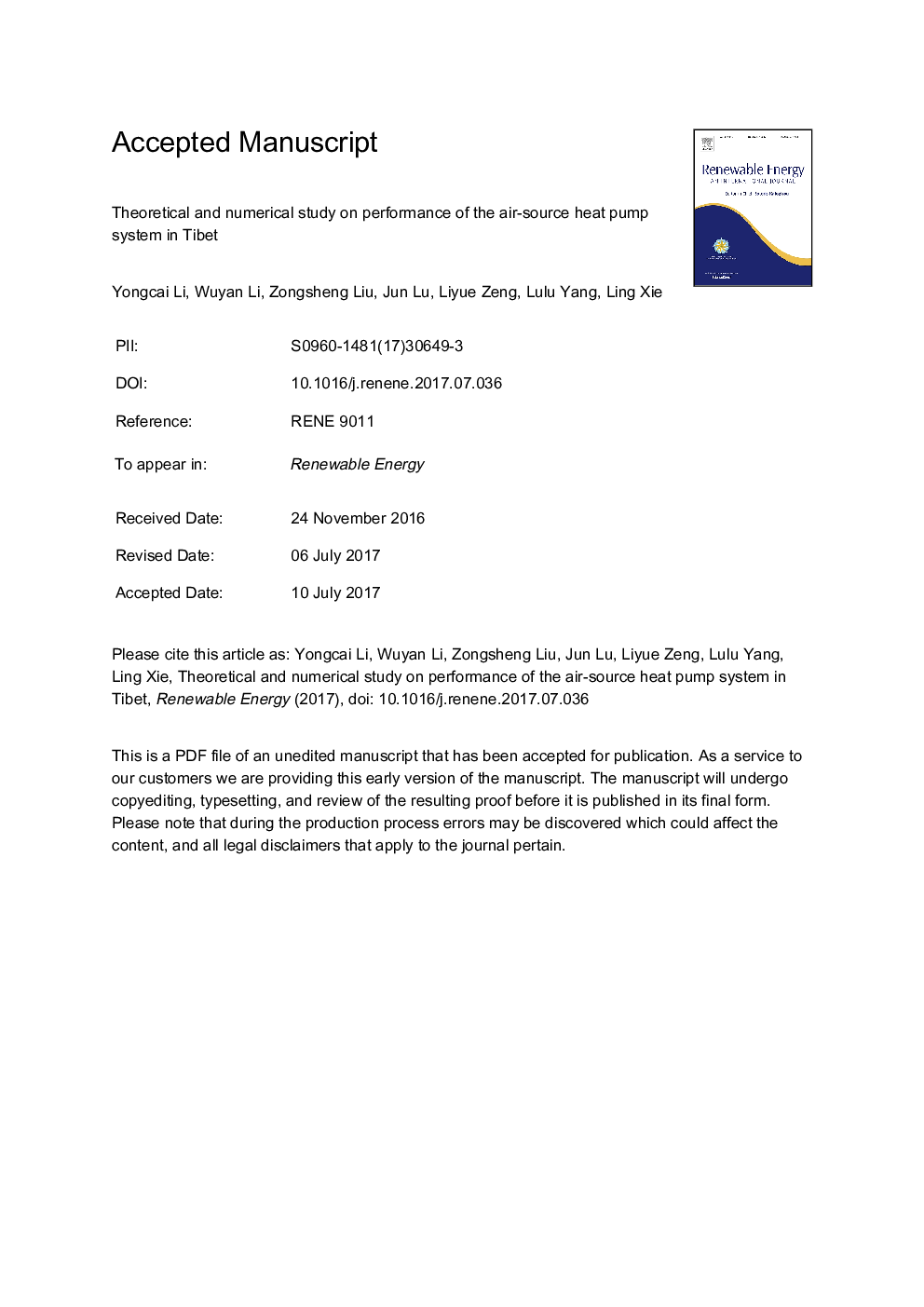| Article ID | Journal | Published Year | Pages | File Type |
|---|---|---|---|---|
| 4926168 | Renewable Energy | 2017 | 43 Pages |
Abstract
Air source heat pump (ASHP) technology is widely accepted for the merits of energy-saving and environmental protection, and has been served as the heating and cooling source in most part of China. This paper presents a numerical model to predict the performance of a typical ASHP system in Lhasa, the capital of Tibet Autonomous Region of China. The theoretical analysis shows that the occurrence of the frost is hard to be found on air-side heat exchanger due to the low relative humidity, which can improve the performance of the ASHP system. The numerical results show that the ambient air temperature and atmospheric pressure have a great effect on the system performance. For the case of without considering frosting problem, the COP of the system is reduced by 9.5%-12.5% than that for standard pressure (101.325Â kPa). The heating capacity of the system is reduced by 16.2%-19.8% than that for standard pressure. For the case of considering frosting problem, the heating capacity and COP of the ASHP system in Lhasa are 37.5Â kW and 1.98, respectively under the outdoor design temperature, which are almost same or higher than most cities in this study.
Related Topics
Physical Sciences and Engineering
Energy
Renewable Energy, Sustainability and the Environment
Authors
Yongcai Li, Wuyan Li, Zongsheng Liu, Jun Lu, Liyue Zeng, Lulu Yang, Ling Xie,
